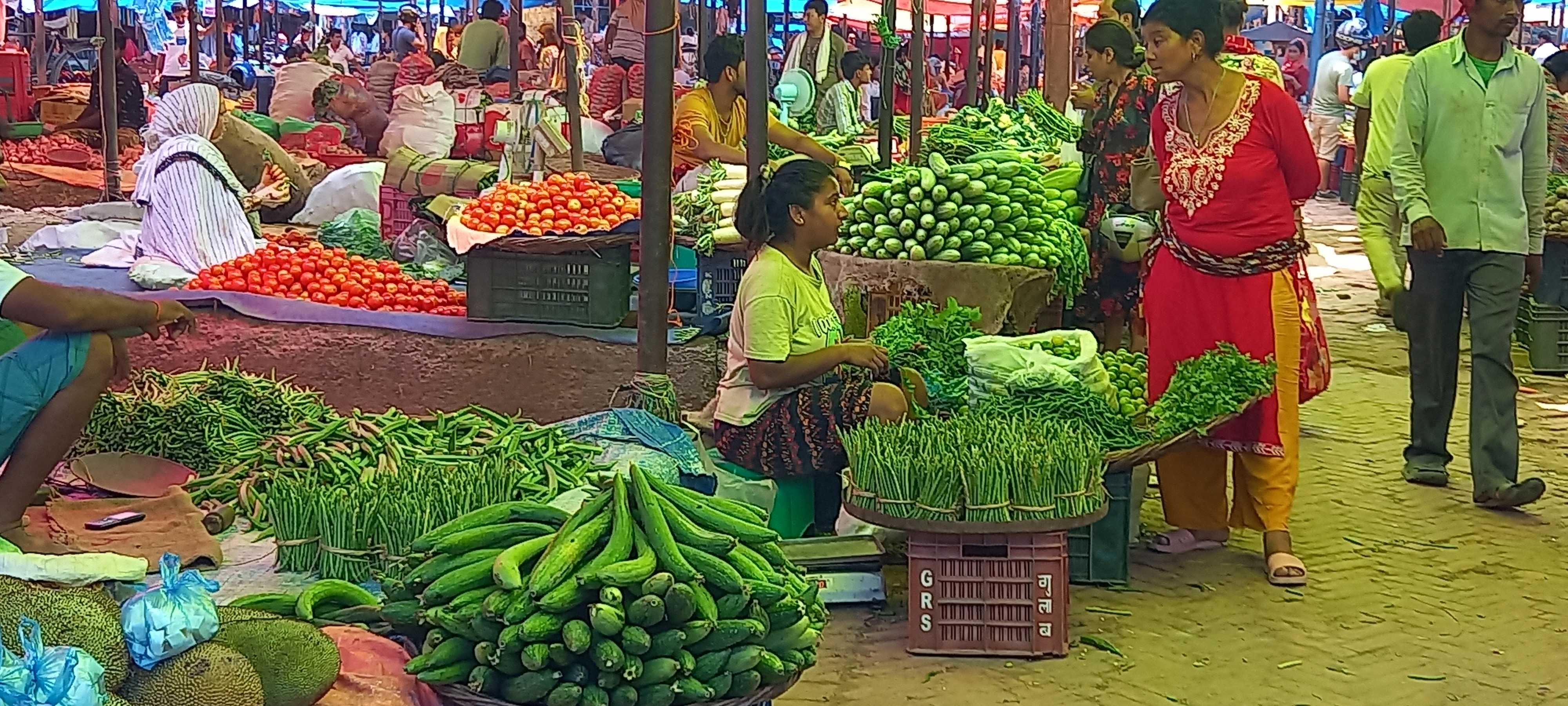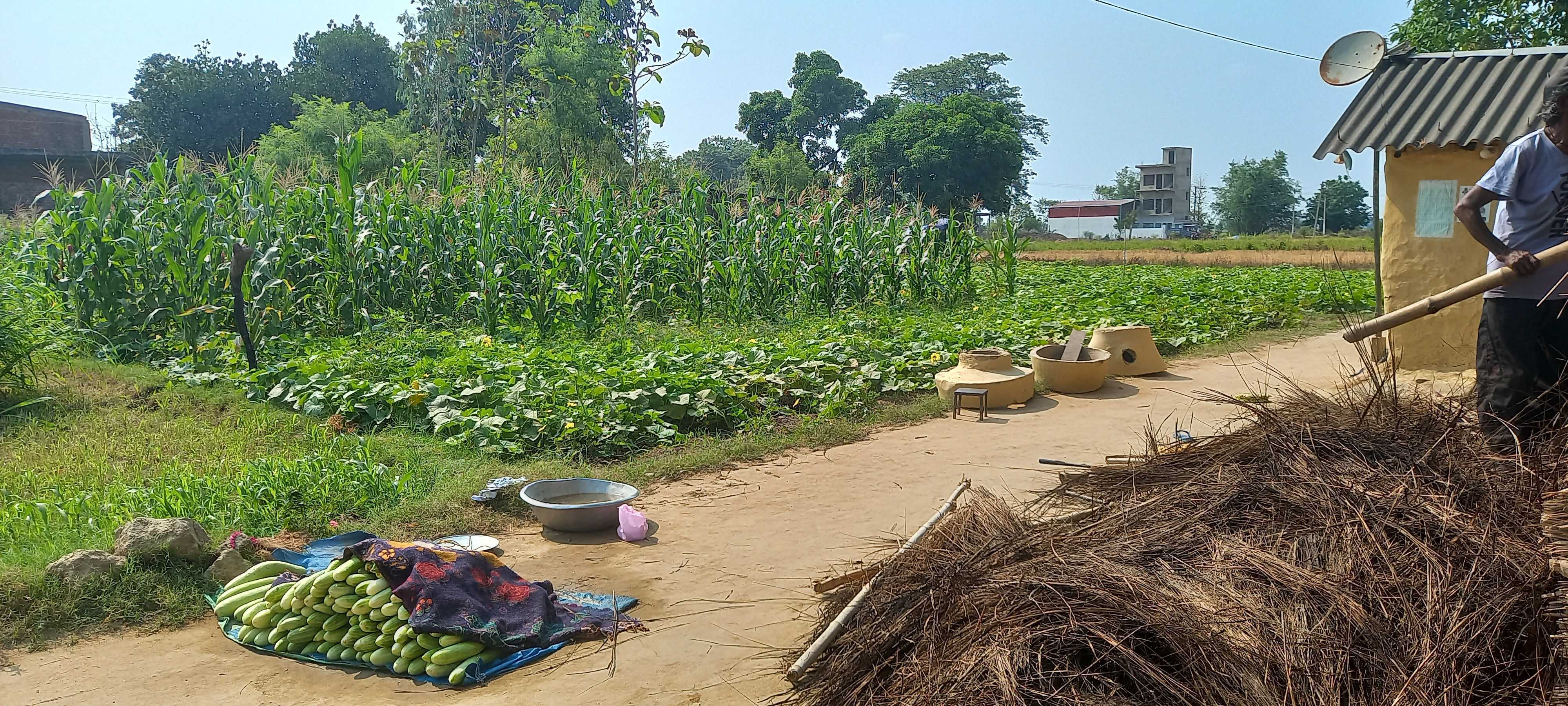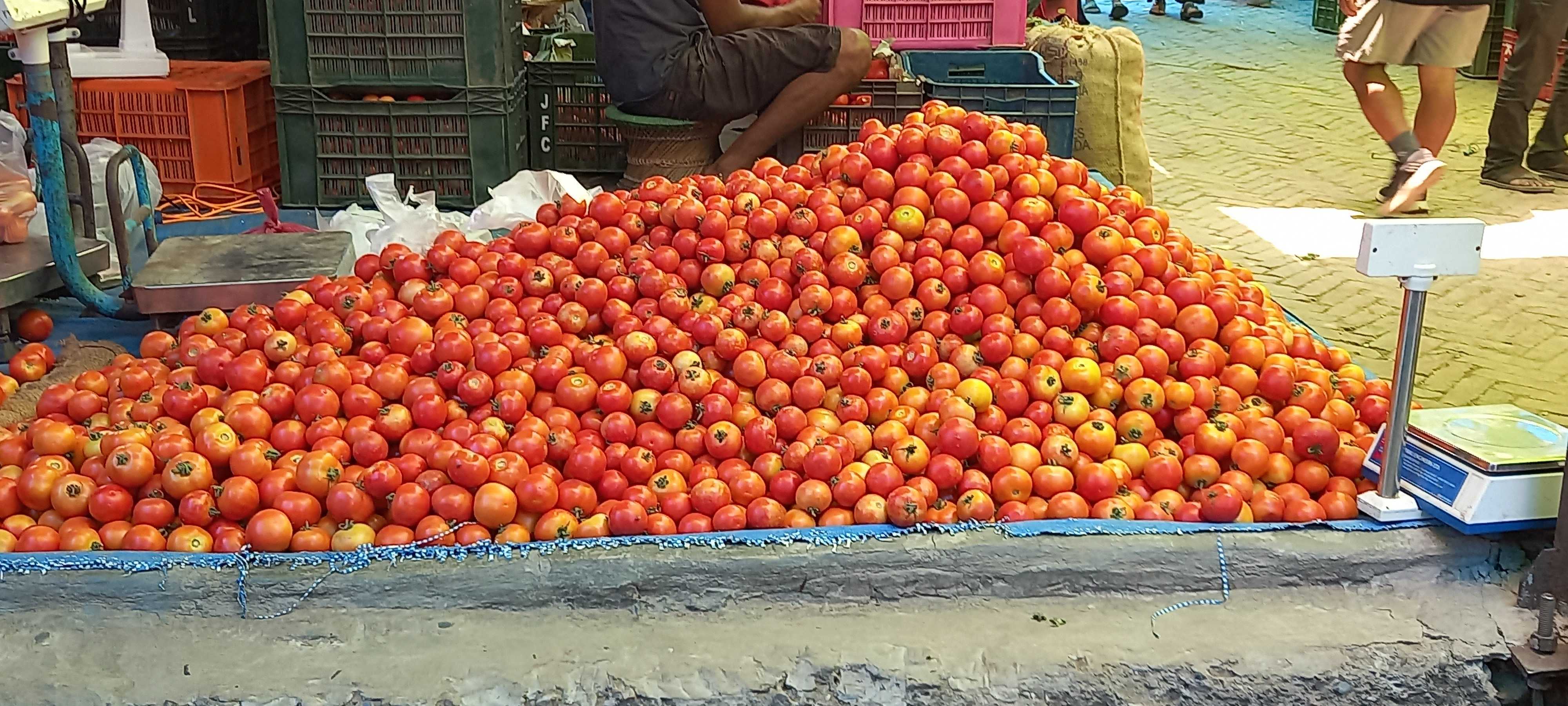farmers | Agriculture | supply channel | food chain

Farmers are our lifeline. As long as there are farmers, there is life in the world.
The food they produce reaches us through various channels either in the produced form or through different additions such as grading, sorting, processing etc.
Due to diverse geographical terrains and variability in climatic conditions, the supply chain plays a significant role in conveying the agricultural produce of one area to another through different channels and actors. That’s how temperate fruits such as citrus fruits and apples, grown in the mid and high hills of Nepal reach the plates of residents in the tropical region.
But when the food is moved, there is a lag in time and an additional cost. The food chain, or the channel determines the price consumers pay and the actual price farmers receive. Each channel has its own benefits and disadvantages based on the produce, processing and consumption. Let's get a grasp of the food chain, as seen in Rupandehi, the breadbasket of Lumbini, here:
Farmer → Local Market (Haat Bazaar) → Retail Shop → Consumer
Producers sell their harvest in their nearby local market which consumers frequent. For example, farmers directly sell their summer vegetables — cucurbitaceous vegetables like pumpkin, bitter gourd, sponge gourd etc — by going to the haat bazaar. The produce then reaches small shops including thela pasal and then reaches the consumer. The consumer may also directly buy from the haat bazaar.

Maya Kunwar, a retail shopkeeper who sells vegetables and fruits in ward number 12 of Siddharthanagar Municipality visits haat bazaar to buy the produce and sell it in the retail market. During the process, she incurs additional costs of transportation.
Maya buys fresh vegetables from the haat bazaar and quickly offloads them to final consumers, so there is no wastage due to storage loss. “Final consumers have to only pay additional travel costs”.
This way farmers can sell directly to the consumer by fixing the price on their own. There is a disadvantage though. Farmers must commit their time to sell their produce which can otherwise be spent doing other work.
Farmer → Consumer
In this food chain, farmers connect to the consumer directly. It is feasible at local levels where farmers can reach consumers through direct interactions like delivering produce in carts, door-to-door selling or when the consumer directly visits the farm. Due to the direct link between farmers and consumers, there are no additional costs incurred by either party. Farmers can receive the exact price consumers pay.
This channel is applicable in the local villages and effective when it comes to the highly perishable produce such as mustard greens (raayo ko saag).

Farmer Rajkumar Chai from Ward No. 10 (Doghari) of Siddharthanagar Municipality grows raayo ko saag almost throughout the year at his one bigha farm.
After the introduction of the ‘Smart Village’ concept in his area two years ago that introduced improved irrigation technology, Chai was finally able to irrigate and cultivate his farm that had been lying fallow due to lack of irrigation. Through tube well irrigation, he is now able to irrigate his entire farm year-round and grow saag throughout the year.
He proudly shares, “I am the only farmer who grows saag in this area throughout the year. I have plantations in my whole area and have sown seeds in different sections. When one section is ready to harvest, another section reaches the stage of maturing while the other section is still seedling.”
Chai now sells directly from his farm all year round with consumers directly visiting his farm to buy his fresh saag instead of opting to visit the nearby haat bazaar.
This channel is beneficial to both consumers and farmers. It is most effective for highly perishable produce. Consumers can get fresh vegetables without having to bear any additional price margin while farmers can get the highest price as it is the shortest, and most direct farm to fork channel. But not without its disadvantages, farmers have to harvest in small batches which can be an inefficient use of time.
Farmer → Collection Centre (Mandi) → Local Market (Haat Bazaar) → Consumer
In this chain, the harvest is first sourced by a collection centre (mandi) and then reaches the wholesale market before reaching the consumer's plate. Farmers harvest vegetables based on the demand of the mandi. The mandi takes on the role of collecting the bulk harvest from farmers and distributing the produce to the nearby haat bazaars. As there are many layers involved, vegetables travel a long distance as compared to the shortest (farmer-consumer) channel.
Sukrim Malla, the chairperson of the farmer's group in the Suddhodan Municipality of Rupandehi district, is a commercial grower of cucurbitaceous vegetables such as pumpkin, and bitter gourd. His farm spans 16 kattha of land.
Malla explains, “I personally contact the vegetable mandi and we harvest the amount they demand. I convinced our farmers group members to harvest together and sell to the mandi. We rarely sell directly to the consumers.”
 Farmers get to sell at different prices to mandi and consumers due to the quantity purchased. Though it is more profitable for farmers to sell directly to the consumer, because the mandi purchases in large quantities, it is still profitable to sell at a lower price.
Farmers get to sell at different prices to mandi and consumers due to the quantity purchased. Though it is more profitable for farmers to sell directly to the consumer, because the mandi purchases in large quantities, it is still profitable to sell at a lower price.
From the mandi, the produce is either sold to the wholesaler or taken to the haat bazaar.
In this channel, collection centre determines the prices, but the channel is effective for selling vegetables from one district to another.
Farmer → Storage Warehouse → Wholesale/Retail Store → Consumer
In this channel, fruits and vegetables from farmers are stored in storage houses (warehouses), a process that increases their shelf life. Wholesalers and retailers buy from storage houses and sell to consumers. Sometimes consumers directly visit storage houses to buy fruits and vegetables when large quantities are needed.
Ayoddha Prasad Kurmi is the owner of a fruit and vegetable cold storage unit, spreading 3.5 kattha, in Siddharthanagar Municipality Ward No. 9.
He buys fruits and seasonal vegetables from the farmers of Siddharthanagar municipality and Omsatiya Municipality and stores them in his warehouse where retailers buy in bulk.
In the case of bananas, Kurmi procures raw bananas from the farmers and stores them until they ripen. The ripe bananas are then sold to retail markets.
Ayoddha explains, “We mostly sell to the retail market. Since we buy bananas before they ripen, the cost of purchase and selling price is vastly different.” What he means is that buying raw bananas and selling well-ripened ones makes his profit margin much better.
This channel allows for fruits and vegetables to be consumed in later seasons and during the off-season. However, off-season vegetables are sold at higher prices. Here too, farmers have less bargaining power — the price of unripe fruits is governed by the owner of the warehouse.
Farmer → Processing → Consumer
In this channel, farmers first process their harvest and then sell it to the consumer. For instance, sugarcane. Farmers process sugarcane into juice and sell it to consumers.
Farmer Shiva Kumar Teli from Ward - 2 sells juice in a busy area close to the main highway of Bhairahawa.
According to Teli, “We have three juice making machines. We sell fresh juice in the market by grinding the sugarcane. Making juice is easier with machines and more profitable too than selling raw sugarcane. It takes five straws of sugarcane to serve juice for 6-7 people. Adding ice and flavour to the fresh juice makes it tastier to consumers.”
Only a few farmers grow sugarcane in Bhairahawa on their small farms. There are no large scale commercial sugarcane growers. Any surplus sugarcane is sold in the market.
Teli explains the situation of sugarcane farmers, “We are not able to grow enough sugarcane for the sugar industry. Doing so requires a large number of farmers and a large farm."
The fact that farmers of Bhairawa aren’t able to grow sugar for the industry may be a blessing in disguise. Although government sets minimum support price in sugarcane now, farmers from Nawalparasi to Rautahat, have been embroiled in conflict with sugar mills for over eight years – as the mills have not been paying them for their crops.
This channel where farmers engage in processing on their own is highly beneficial for them as they fetch a higher price as compared to selling raw produce. Processing machines are costly in the short run but a profitable choice in the long run. But not all farmers may engage this way.
Farmer → Contractor (Middleman) → Processing Unit → Retail shop → Consumer
In this channel, contractors hired by the processing unit contact farmers before harvesting the vegetables and fix the price at the outset. Farmers directly sell fixed quantities to contractors who then sell to processing units who then sell to hotels and retail shops in large quantities. In Bhairahawa, farmers sell tomatoes to contractors from Butwal or Bhairahawa.
 The owner of a New Buddha Sauce Udhyog based in Tilottama Municipality details, “We have chosen specific farmers as we are very particular about the quality of our ketchup. We mainly buy from the farmers of Butwal and Bhairahawa, process them into ketchup and sauce and distribute them to different retail shops in Butwal and Bhairahawa.”
The owner of a New Buddha Sauce Udhyog based in Tilottama Municipality details, “We have chosen specific farmers as we are very particular about the quality of our ketchup. We mainly buy from the farmers of Butwal and Bhairahawa, process them into ketchup and sauce and distribute them to different retail shops in Butwal and Bhairahawa.”
In this case, contractors fix the price. Since the final product is in processed form, the price and storage duration are higher than the raw products. Farmers benefit as large volumes are purchased at once. But the fact that the farmers receive low prices cannot be neglected.
The exploitation of farmers at the hands of middlemen, who often negotiate between farmers and other parties, was unequivocally revealed during the COVID-19 pandemic. During this time, it was reported that farmers in Dhading were selling off-season vegetables for less than Rs 20 per kilo as opposed to Rs 130 per kilo pre-pandemic. But, consumers were paying inflated prices that were well above the pre-pandemic rates.
But this exploitation is not limited to just during the pandemic. Middlemen are known to exploit both farmers and consumers, pocketing large profits for themselves. In Rupandehi, the existence of a localised haat bazaar has eliminated middlemen from most channels. However, when it comes to fruits like mangoes that travel from the terai to the mid and upper hills, middlemen once again enter the scene.
For farmers to get a fair share of benefit out of their hard work, they must have better market and price control, and policy makers must implement policies that works best for the farmers and shortens the food chain.
Read More Stories
Kathmandu’s decay: From glorious past to ominous future
Kathmandu: The legend and the legacy Legend about Kathmandus evolution holds that the...
Kathmandu - A crumbling valley!
Valleys and cities should be young, vibrant, inspiring and full of hopes with...
The monsoon is currently widespread, with partly to generally cloudy conditions all over...